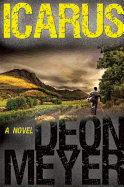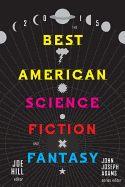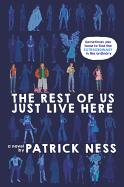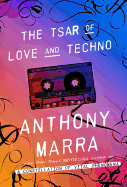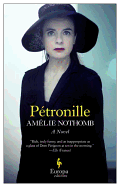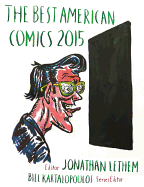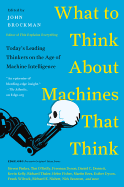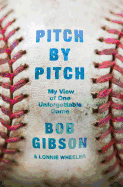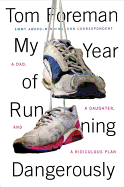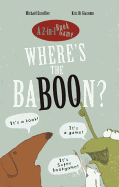Friday, October 16, 2015
Scary stories aren't just for Halloween, but it's a fine time to tell them (flashlight under chin optional). For the classic tales that have haunted generations--from "The Hook" (the detached hook is left in the kids' car-door handle by the escaped, one-handed prisoner!) to a whole chapter of " 'jump stories' you can use to make your friends jump with fright"--there's Alvin Schwartz's tried-and-true collection, Scary Stories to Tell in the Dark, illustrated by Brett Helquist (Harper, paperback). We asked some children's booksellers to share a few more of their favorite Halloween backlist titles.
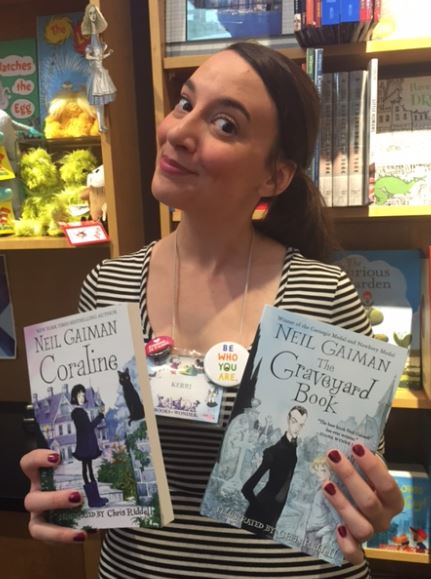 |
|
| Kerri J. of NYC's Books of Wonder pretends she can handle scary books by Neil Gaiman. | |
Kerri J. at New York City's Books of Wonder, though she calls herself "a huge chicken" when it comes to scary books, raced over to unshelve Neil Gaiman's Coraline and The Graveyard Book. These paperback British editions, with illustrations by Chris Riddell, are now available in the U.S. as a boxed set, along with the non-Halloweenish Fortunately, the Milk (HarperCollins). If readers thought the button-eyed parents in Coraline were chilling in the mind's eye, wait until they see P. Craig Russell's graphic novel version... yeeeeikes!
Across the country, René Kirkpatrick of Eagle Harbor Book Co. on Bainbridge Island, Wash., suggests Will Hubbell's Pumpkin Jack (Albert Whitman), a winning picture book that shows a decomposing jack-o'-lantern whose seeds begin a whole new cycle of life in a boy's garden.
Kathryn Dennis of Seattle's Mockingbird Books has a soft spot for Washington State author Tom Brenner and Holly Meade's And Then Comes Halloween (Candlewick), a seasonal favorite in cut-paper collage that's "more of a fall book, not scary, about kids getting ready for trick-or-treating," says Dennis. Brenner sets an autumnal tone indeed: "WHEN nighttime creeps closer to suppertime,/ and red and gold seep into green leaves,/ and blackberries shrivel on the vine... THEN hang dried corn,/ still in husks all crinkly and raspy,/ sounding like grasshoppers." It's definitely time to get a pumpkin. --Karin Snelson, children's and YA editor, Shelf Awareness
The Tsar of Love and Techno: Stories
by Anthony Marra
In 2013, Anthony Marra published the first English-language novel about the Chechen wars, A Constellation of Vital Phenomena, a sumptuous, nonlinear piece of literature. With The Tsar of Love and Techno, he revisits Chechnya and its decades of turmoil, over the lion's share of a century. Beginning with a failed artist, assigned to censor pictures, Marra entwines the stories of one pastoral painting, a ballerina, a conscripted soldier, his brother and a mixtape given "In Case of Emergency!!!" as decades and decades pass, to form a constellation of spellbinding short fiction.
While war-torn Eastern Europe might seem like a dour setting, Marra suffuses his narratives with an idiosyncratic, dry comedic edge to counterbalance recurring themes of loss and heartache. In "The Grozny Tourist Bureau," the narrator guides his tour group of wealthy businessmen through the city, answering their questions about bulldozed rubble ("suburbs") and a mass grave (an "attraction for archaeology enthusiasts... millions of years old") according to cheery propaganda notes. While explaining his phishing scam to his father in "A Temporary Exhibition," Sergei offers an illustration, "You remember how Mom had that embroidered pillow? When she got upset, she'd shout into it and no one would hear her. That's Facebook."
Marra's incisive use of humor enhances the compelling stories in The Tsar of Love and Techno to render fully the dilemmas their characters face. Whether it concerns the painter incarcerated for treason he didn't commit or the dancer who rises to fame in spite of herself, resilience blooms along a tumultuous timeline, and demonstrates how comedy sprouts where reality deviates from the propaganda line, even in the face of tragedy. --Dave Wheeler, associate editor, Shelf Awareness
Discover: Anthony Marra's elegant storytelling is on full display in these linked short stories that cover nearly a century in Chechnya.
Pétronille
by Amelie Nothomb, transl. by Alison Anderson
At 108 pages, Pétronille is a slight, frothy bubble of a book, in Amélie Nothomb's signature lighthearted style. Though not quite what readers might expect from Nothomb, it's a genuinely funny and touching tribute to a friendship between two young female novelists in Paris. The Belgian author (Tokyo Fiancée, Fear and Trembling), a baroness and international celebrity known for her eccentric apparel, tells the story of an author, also named Amélie, who is looking for a drinking companion. When Pétronille Fanto, a reader she's corresponded with via e-mail, comes to one of Amélie's book signings, she fits the bill perfectly.
Amélie comes from privilege, while her new friend is the left-of-left daughter of a Communist. Their collision in friendship is frequently hilarious, filled with misunderstandings, clever repartee and comic spats. As their lives slip in and out of each other's, intersecting and parting over the years, they get repeatedly plastered, quarrel frequently, make up just as often and become champagne connoisseurs, drinking only the best.
Pétronille is a loose cannon, always ready to take another risk, as in impulsively deciding to urinate between two parked cars. But Amélie is up to the challenge, as she proves in a wildly funny sequence on a ski slope, where Amélie--who has not skied since she was four years old--trusts in "the genius of childhood" and closes her eyes.
Nothomb is spare and witty and sometimes rich. "Reality always rushes in to prove how greatly you lack imagination." The unfortunate ending is ridiculous, but can't quite quell the effervescence of this bright, funny breeze of a novel. --Nick DiMartino, Nick's Picks, University Book Store, Seattle, Wash.
Discover: In witty style, Amélie Nothomb recounts a friendship between two young women writers who become drinking companions.
Mystery & Thriller
Icarus
by Deon Meyer
As Icarus begins, the sobriety of Captain Benny Griessel, who has appeared in four previous South African thrillers by Deon Meyer (Blood Safari; Cobra), is threatened by a series of dreadful events in the hot weather leading up to Christmas.
A former colleague has killed himself and his family, sending Benny off on a bender right as the body of Ernst Richter has washed up on the South African shore. Richter was the young and high-profile founder of Alibi, a website that provides apparently legitimate alibis for cheating spouses. Many people are unsurprised that Richter is dead; he had been missing for weeks, and before that had received threats from those who thought his business unprincipled. What does surprise the Priority Crime unit ("the Hawks") is Richter's connection to a family winery with a strange history. Now Benny has to try to sober up fast enough to help the Hawks unravel mysteries surrounding the burgeoning South African wine and technology industries, and find Richter's killer.
With rapid pacing, likable characters and occasional Afrikaans phrases, Icarus works well as a stand-alone novel. Benny's desperate and futile efforts to conquer his addiction, the Hawks' attempts to beat hackers at their techie games and the ever-present awareness of South Africa's complicated past make Icarus irresistible. The similarity of the fictional Alibi situation to the AshleyMadison.com scandal in real life lends added depth to a complex thriller. --Jessica Howard, blogger at Quirky Bookworm
Discover: In a very contemporary thriller, the founder of a South African website for cheating spouses is found dead.
Science Fiction & Fantasy
The Best American Science Fiction and Fantasy 2015
by Joe Hill, editor; series editor John Joseph Adams
The Best American series started publishing annual anthologies of short stories in 1915; since the mid-1980s, additional volumes have been added to collect essays, sports writing, nature writing, mystery stories and other subject- and genre-specific pieces. This marks the first volume dedicated to science fiction and fantasy writing, a long overdue nod to the genre that series editor John Joseph Adams (editor of Press Start to Play) calls a "major milestone for a genre that has at times struggled for literary respectability" despite a wealth of strong and much-respected work in the field.
If this first volume is anything to go by, fans of science fiction and fantasy--and those new to both genres--will find this series one to look for year after year. The Best American Science Fiction and Fantasy 2015 pulls together 20 incredible pieces from a diverse list of genre authors. Works from well-loved and long-established writers (Neil Gaiman's "How the Marquis Got his Coat Back" and Jo Walton's "Sleeper," for example), stand side by side with stories from newer voices (Alaya Dawn Johnson's "A Guide to the Fruits of Hawai'i" and Karen Russell's "The Bad Graft"). Sofia Samatar (A Stranger in Olondria), notably, wrote two of the stories in the collection.
In the introduction to the collection, guest editor Joe Hill (Horns; Heart-Shaped Box) writes that science fiction and fantasy are "the greatest fireworks show in literature, and your own imagination is a sky waiting to catch fire." Truly, the talent and imagination on display here are dazzling. --Kerry McHugh, blogger at Entomology of a Bookworm
Discover: The first volume of science fiction and fantasy stories to be collected for the Best American anthology series.
Graphic Books
The Best American Comics 2015
by Jonathan Lethem, editor; series editor Bill Kartalopoulos
The 2015 best comics omnibus marks the 10th anniversary of the series edited by Bill Kartalopoulos, and this time he manages to secure novelist and comics enthusiast Jonathan Lethem (Fortress of Solitude, Omega the Unknown) to curate the collection. Lethem, who admits his preference for " 'termite' comics... those that nibbled around the mainstream's edges," has brought together an eclectic mix, including excerpts from the highly regarded Jules Feiffer, comics journalist Joe Sacco and 2014 Eisner Award nominee Cole Closser.
Leading off the "guys [that] taught me what my parents' world was like" section are excerpts from Feiffer (Kill My Mother) and Roz Chast, whose Can't We Talk About Something More Pleasant? presents a painful first-person account of one daughter's grief and relief as Alzheimer's takes its unforgiving toll on her parents. Lethem's love for storytelling highlights some of the most thoughtful pieces in the collection. These include Julia Gfrörer's "Palm Ash" (a story, set in Roman times, of religious persecution and retribution for a secret baptism gone horrendously wrong) and Megan Kelso's "The Good Witch, 1947" (which spotlights a single mother's struggles after being fired from her postwar job). Lethem also nods to his reputation for genre bending with his three selections in Chapter 10's "Brainworms"; each one hovers on the precipice of weird and otherworldly, defying categorization and offering the greatest freak out potential.
Not all of Lethem's choices will resonate with readers, but the ones that do will provide considerable food for thought. --Nancy Powell, freelance writer and technical consultant
Discover: Novelist and avid comic book fan Jonathan Lethem showcases the year's outstanding American comics.
Political Science
The Reproach of Hunger: Food, Justice, and Money in the Twenty-First Century
by David Rieff
After extensive research and two decades of observation, David Rieff, in The Reproach of Hunger, offers a nuanced perspective on hunger and poverty. In this critical look at those entrusted to solve food crises and end hunger, including farming advocates and tech-savvy "philanthrocapitalists," Rieff (Swimming in a Sea of Death) examines what solutions they have pursued and questions whether they, often without oversight by governments or the people suffering, actually understand the complexity of the problem.
According to Rieff, hunger is a problem rooted in economic, political and technological choices. He argues that many of the problem-solvers put their energies into optimistic fantasies that are doomed to fail, such as the Millennium Development Goals, which unrealistically aimed to "eradicate extreme poverty and hunger" by 2015. Modern assumptions surrounding food crises suggest hunger and poverty will end permanently if people try hard enough and throw enough money at the problem. Blinded by good intentions, these people and organizations fail to see their goals are not feasible. More than that, Reiff argues that the changes that have occurred are not sustainable, nor do they empower the people who are suffering.
In showing how and why attempts to feed the world have failed, Rieff reveals how deeply rooted popular thinking about poverty has become. His outlook is bleak, but not hopeless. While Reiff does not offer a solution, he instead calls for a complete rethink and deconstruction of the status quo, without which there will not be meaningful, lasting change. --Justus Joseph, bookseller at Elliott Bay Book Company
Discover: David Rieff demonstrates why food crises will continue until radical changes are made in trying to solve world hunger.
Science
What to Think About Machines That Think: Today's Leading Thinkers on the Age of Machine Intelligence
by John Brockman
The Edge Question series is an annual collection with dozens of answers from scientists, philosophers and other thinkers to a single question. In What to Think About Machines That Think: Today's Leading Thinkers on the Age of Machine Intelligence, John Brockman collects almost 200 essays on the subject of, roughly speaking, artificial intelligence. Most of the essays take no more than a few minutes to read, and some are only one or two sentences long. Physicist Freeman Dyson offers little more than "I do not believe that machines that think exist, or that they are likely to exist in the foreseeable future," while professor of astronomy Dimitar Sasselov argues that "if our future is to be long and prosperous, we need to develop artificial intelligence systems in the hope of transcending the planetary life cycles in some sort of hybrid form of biology and machine." In other words, opinions vary.
These collections have always resembled a series of TED talks on a single, if malleable, subject. The contributors frankly don't have the space to make nuanced, multi-point arguments, so they typically settle for bold claims. What to Think has bold claims in spades, including a surprising number that dismiss machine intelligence as impossible or already present in another form--dozens of contributors point out that humans are simply organic thinking machines. Still, bold claims are good fun in small doses, and What to Think is another stimulating read from Brockman and company. --Hank Stephenson, bookseller, Flyleaf Books
Discover: Modern thinkers offer some possibly prescient takes on the future of artificial intelligence.
Sports
Pitch by Pitch: My View of One Unforgettable Game
by Bob Gibson and Lonnie Wheeler
Pitcher Bob Gibson had a stellar career, taking the mound for the St. Louis Cardinals for 17 years. But on the night of October 2, 1968, Gibson made history. He pitched the first game of the World Series against the Detroit Tigers and struck out a record 17 hitters--at least one batter in each inning--and concluded the game in the ninth by striking out three consecutive Tiger sluggers: Al Kaline, Norm Cash and Willie Horton. In Pitch by Pitch, Gibson gives readers and baseball fans a rare and intimate account of this momentous World Series game by reliving all nine innings and the 144 pitches he threw.
Gibson candidly reveals his thoughts and mental strategies, on the mound and off, and details the pitching repertoire he employed--most notably, four stitch fastballs and backdoor sliders--to earn his shutout victory. He offers stories and anecdotes about batters he faced that night, as well as other opponents, coaches and teammates, especially his close relationship with catcher Tim McCarver. Gibson (Stranger to the Game) and his co-writer, Lonnie Wheeler (Intangiball), also tie in significant events from 1968, including escalating racial tension and the assassinations of Martin Luther King, Jr. and Robert Kennedy, and how they affected and influenced Gibson during an extraordinary season. The well-drawn, atmospheric narrative the authors present is so rich and compelling, readers can practically feel the sweat rolling off Gibson's face, chin and wrists during the high-stakes grind of this landmark game. --Kathleen Gerard, blogger at Reading Between the Lines
Discover: Hall of Fame pitcher Bob Gibson recounts the historic Game One of the 1968 World Series in depth.
My Year of Running Dangerously: A Dad, a Daughter, and a Ridiculous Plan
by Tom Foreman
CNN correspondent Tom Foreman used to run marathons--in his 20s. One day, as Foreman was contemplating blowing out 51 candles on his next birthday cake, his eldest daughter (then 18) asked him to run a marathon with her. Little did he know that simple request would rekindle a long-lost love of running, leading him to run not only that one marathon with his daughter but also five half marathons, two additional full marathons and a 55-mile ultra-marathon, all over the course of a year.
My Year of Running Dangerously is Foreman's humorous and heartfelt memoir of this experience. Starting with the earliest, shortest training runs with his daughter and moving through to the grueling 20- and 30-mile trails he ran in preparation for his ultra race, Foreman recounts his training days with a charming candor. Though much of Foreman's writing naturally covers the sport of running--shoes, gear, nutrition, common injuries, training plans--the majority of his reflections center on the experience of running versus the technique of it. In Foreman's case, the running experience led to a stronger connection with his eldest daughter, a better understanding of his relationship with his younger daughter, a deepened relationship with his wife, and a belief in his own ability to reach his goals, no matter how unattainable they may seem. "Running," he writes as he attempts to explain his love of the sport, "puts me in touch with the moment, and reminds me how each one is rare and precious." My Year of Running Dangerously will do the same thing for readers. --Kerry McHugh, blogger at Entomology of a Bookworm
Discover: CNN correspondent Tom Foreman's memoir of long-distance running details the lessons it has taught him.
House & Home
My Old Dog: Rescued Pets with Remarkable Second Acts
by Laura T. Coffey, photographs by Lori Fusaro
If Masterpiece Theatre staged a canine series, the cocker spaniel on the cover of My Old Dog could host: sage, dignified, decked out in a tasteful jacket and ready to tell stories. Readers who accept the invitation and read about "Rescued Pets with Remarkable Second Acts" will enjoy heartwarming drama and happy endings.
"My Old Dog celebrates successful senior-dog rescue stories," writes Laura T. Coffey in her introduction to the book, which is divided into sections: Finding the Good Life, highlighting dogs in their golden years that found homes with humans, including George Clooney and novelist David Rosenfelt; Healing, featuring dogs paired with people with special needs; Helping, with the story of the department store Nordstroms and its nine-acre, humanitarian oasis for aging animals; and Retiring with Purpose, tales of service dogs that simply changed jobs.
Each dog--19 in all, ages seven through 18--has a sometimes incredible story of near-death, abandonment and hopelessness. Chaney, who "retired with purpose," was reunited with his Marine two years after their tour of duty, when Corporal Matt Hatala needed help to overcome PTSD. Their success, and Chaney's receipt of an American Humane Association's Hero Dog Award, typifies the uplifting "second acts" in the book.
Lori Fusaro's stunning portraits--delightful canine candids, some with humans--open each dog's chapter with two-page spreads.
"How You Can Help" (also illustrated with endearing gray-muzzled canines) provides tips for caring for an older dog, plus 11 pages of organizations dedicated to senior-pet assistance. November is "Adopt a Senior Pet Month." Here's your inspiration. --Cheryl Krocker McKeon, manager, Book Passage, San Francisco
Discover: Here are heartwarming stories of senior dogs whose life-saving adoptions brought joy to their owners, plus how-to tips on getting and caring for an older dog.
Children's & Young Adult
The Rest of Us Just Live Here
by Patrick Ness
In British novelist Patrick Ness's The Rest of Us Just Live Here, 17-year-old Mikey Mitchell and friends want only to navigate their final days in high school before their school gets blown to bits, yet again, by unknown invaders.
No one talks much about the small Pacific Northwest town's various explosions, vampire infestations and soul-eating ghost episodes, or why the ultra-cool indie kids, "with unusual names and capital-D Destinies," keep dying. In fact, the parallel story of an Immortal Empress who wants to take over the world serves as a mere backdrop to the story's "real" action, narrated in Mikey's thoroughly engaging voice. Mikey is a worrier whose compulsive loops of hand washing and counting worsen as his troubles multiply: his sister may be starving herself again; his dysfunctional parents are almost entirely absent; he's desperately in love with his good friend, Henna, who has a crush on someone else; and his best friend, Jared, who is one-quarter cat god, is keeping secrets. Complementing the angst is plenty of creepy collateral damage from the current interspecies war, such as zombie deer--and police officers--with glowing blue eyes.
This clever sendup of traditional fantasy fare doesn't have nearly the body count as Ness's award-winning Chaos Walking trilogy, but it does have all of the heart, and then some. --Lynn Becker, host of Book Talk, a monthly online discussion of children's books for the Society of Children's Book Writers & Illustrators
Discover: In Patrick Ness's funny quasi-fantasy, graduating seniors are more concerned about relationships than the dangerous Immortals threatening their town.
Dream On, Amber
by Emma Shevah, illus. by Helen Crawford-White
One of the first things that 11-year-old Amber (officially Ambra) Miyamoto from South London would like to say is that she's half Italian and half Japanese. The second thing is, when she was six years old, her dad mysteriously disappeared and never came back. She's mad about it, too.
Emma Shevah's vivacious debut novel, Dream On, Amber, is the story of how Amber, her "super bossy and molto embarrassing" six-year-old sister, Bella, and her graphic designer mom persevere, despite her father's absence: "My dad leaving feels like there's this massive black hole in me, like the ones up there in space. It twists in a dark, silent spiral, super heavy, sucking some of the good things in and swallowing them up." The family gets along just fine without him, mostly, but Bella's birthday party is rapidly approaching, and she starts writing her dad letters in hopes that he will somehow, miraculously, show up. Amber, in a "genius" attempt to keep her little sister's heart from breaking, weaves a tangled web when she begins answering Bella's letters. Amber presents herself as a shallow girl whose biggest obsession is getting a peer-competitive cell phone, but she can't hide her big heart. Her snarky first-person voice keeps the story afloat, and her artistic streak manifests itself in both drawings of her "Dream Dad" and cartoonish doodles on every page.
Dream On, Amber, originally published in Great Britain, is an entertaining, largely unsentimental look at a girl who, as best she can, makes peace with both the family members she has around and the ones who sadly aren't. --Karin Snelson, children's and YA editor, Shelf Awareness
Discover: A father abandons his family, and Amber Miyamoto and her younger sister navigate his absence with a little hope and a lot of panache.
Where's the Baboon? A 2-in-1 Book Game
by Michaël Escoffier, illus. by Kris Di Giacomo
"Let's go search for hidden words!" suggests a school-bound mouse in the opening spread of Michaël Escoffier and Kris Di Giacomo's spritely Where's the Baboon? A 2-in-1 Book Game, a companion to the team's Take Away the A. (The very cute white mouse, perched atop a pencil, is being ceremoniously carried by two other white mice.)
Once at school, there are many classroom mysteries to solve, and one question appears on every spread. "Who is hiding behind the castle?" for instance. The bold letters shown here are highlighted in red in the book and they spell c-a-t, and that's who is hiding behind the castle, even though all the reader sees is two orange ears and a telltale tail. "Who can count to a thousand?" A toad! (The toad is counting a fishbowl full of tadpoles on the floor of the classroom while the three white mice climb number blocks.) The words hidden inside words should delight new readers, and even just guessing at as-yet-unseen animals is fun. Each school spread offers an enticing window into classroom mayhem, populated only by animals, including, eventually, the titular baboon. Delightful details abound: the mischievous mice are always up to something; a brown cow is reading a book called How Now?; and the only human in sight is a tiny toy for the ape.
Comically choreographed with the creative wordplay, Di Giacomo's expressive, winsome paintings of snakes cutting paper snowflakes, cows juggling mice and the explosive birthday surprise at the end guarantee giggles. --Karin Snelson, children's editor, Shelf Awareness
Discover: In this charming, multi-faceted picture book, a classroom of animals is ripe with riddles.
| Advertisement Meet belle bear! |


